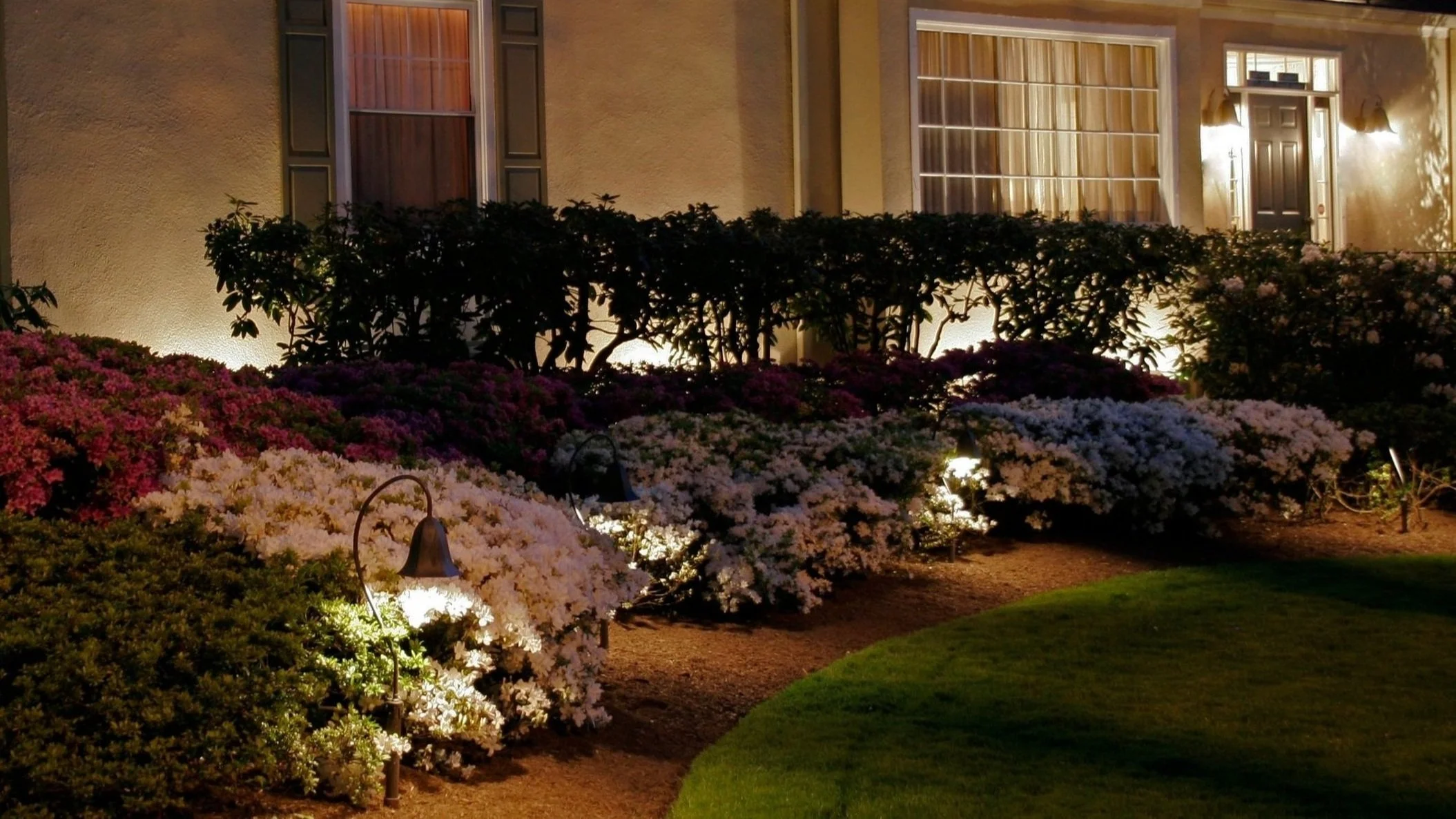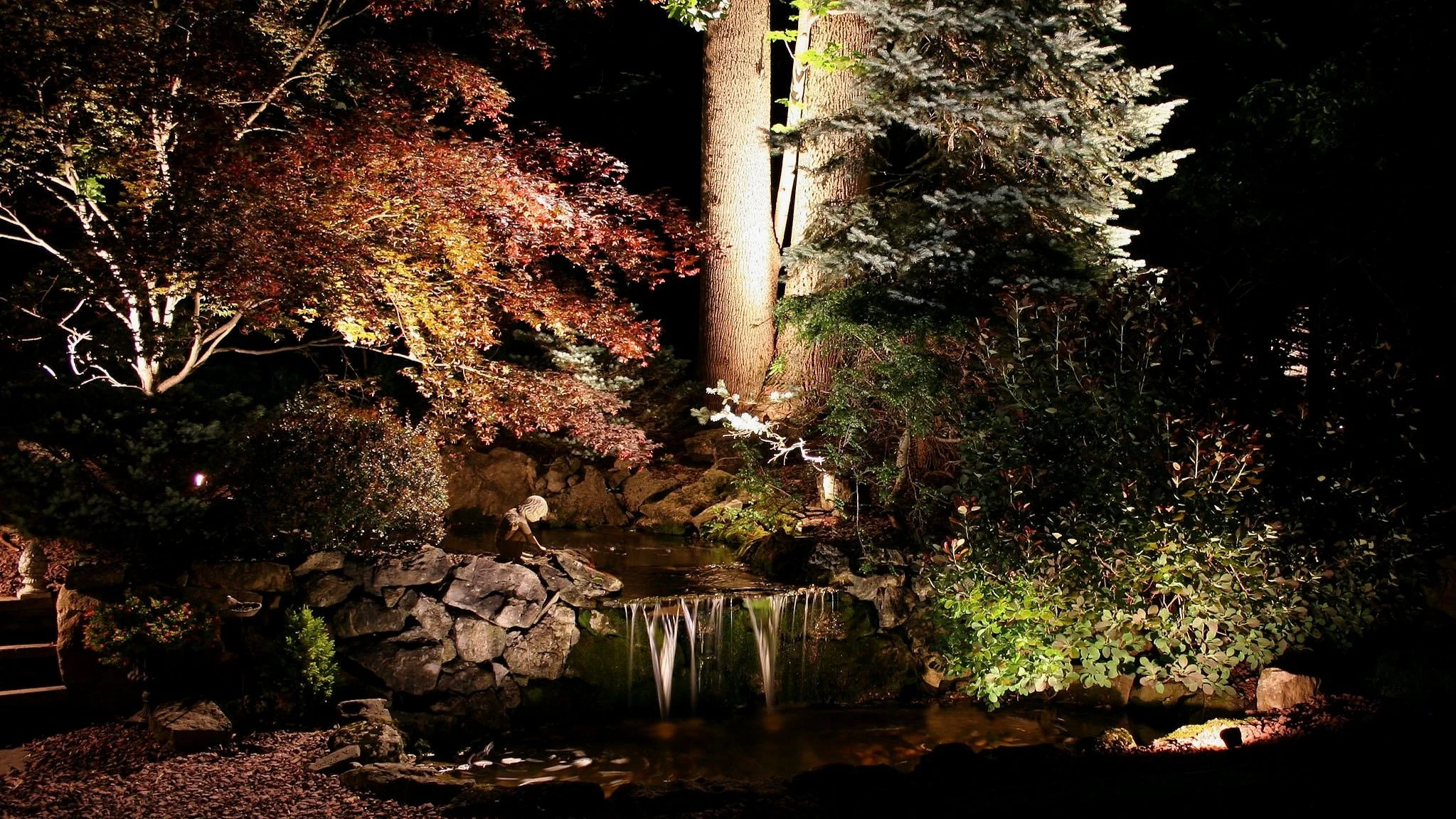Outdoor Lighting That Honors the Landscape Designer’s Vision
Protecting Planting Plans After Dark
Outdoor lighting design for landscape designers isn’t an accessory. It’s part of the canvas. When integrated early, lighting reveals the structure and rhythm you’ve built into the landscape. When added late, it can undo weeks of planning in a single evening.
You’ve mapped out every bed, balanced seasonal color, and framed sightlines to draw the eye. Then the sun sets — and without the right lighting, your masterpiece disappears. Or worse: glare flattens textures, fixtures scorch foliage, and irrigation lines fight for space with hastily installed conduit.
Where Lighting Goes Wrong for Designers
Most landscape professionals have seen outdoor lighting derail a finished project:
Fixtures shoved into beds without respect for root zones or irrigation layouts.
Uplighting placed too close to trunks, baking bark and foliage.
Floodlights that wash out carefully balanced layers of color and texture.
Ill-considered glare that turns graceful plantings into harsh shadows.
The problem isn’t the fixtures — it’s timing and coordination. Lighting that arrives after installation is forced to adapt, not enhance. The result? A garden that looks accidental instead of intentional.
Why Early Collaboration Matters
When we’re at the table during design development, lighting is no longer an intrusion — it’s part of the plan. That means:
Custom landscape lighting for planting plans that anticipates canopy spread, bloom cycles, and mature form.
Conduit and wiring placed before planting beds are mulched and irrigated, avoiding disruption later.
Beam angles and fixture types selected to complement textures — from the shimmer of ornamental grasses to the sculptural drama of specimen trees.
Control zones mapped so designers can choreograph light seasonally, just as they choreograph plant color and form.
The outcome is a nightscape that feels as alive as the daytime garden.
Real-World Coordination in Action
On a recent Monmouth County project, early coordination allowed us to run wiring beneath stone retaining walls before backfill. The designer’s terraced beds, layered with conifers and perennials, remained untouched — no trenching, no root disturbance. Fixtures were tucked discreetly into wall niches, grazing foliage without glare.
The client now experiences a garden that glows softly year-round, while the designer showcases portfolio images that capture both the daylight planting scheme and its nighttime story.
Beyond the Install: Reputation & Referrals
Landscape designers build reputations on the details clients remember. A design that dazzles at noon but vanishes at night is half-finished. A design that thrives in both sun and shadow becomes unforgettable.
Collaborating with lighting professionals who respect your craft means:
Portfolios that photograph beautifully after dark.
Clients who recognize your foresight and recommend you to their networks.
Fewer callbacks — no complaints about glare, plant burn, or dark corners.
When lighting and landscape design work as one, your projects not only last, they live.
Your Next Project Could Shine Brighter
If you’re working on a design now, let’s review it together before the first plant goes in the ground. The goal is simple: protect your vision and bring your landscapes to life after dark.
And if you’d like to explore how we can support your future designs, let’s connect.
Take A Closer Look At NatureScape Through The Eyes Of Our Clients
Lighting New Jersey
NatureScape Designers
NatureScape Lifestyle
FAQ — Top Designer questions (straight answers)
-
Proper placement prevents damage and ensures foliage thrives. When designed thoughtfully, lighting supports plant health by respecting root zones, heat exposure, and growth cycles.
-
The best time is during design development or before installation begins. Early planning allows wiring, conduit, and fixtures to be placed without disturbing soil, irrigation, or roots.
-
A lighting partner ensures your planting designs look intentional after dark, protects your workflow from disruption, and helps create projects that clients remember — and share.
If you’ve enjoyed reading this, please share
with a friend and follow us on social.








For Landscape designers, early collaboration ensures landscapes look intentional by day and unforgettable at night.